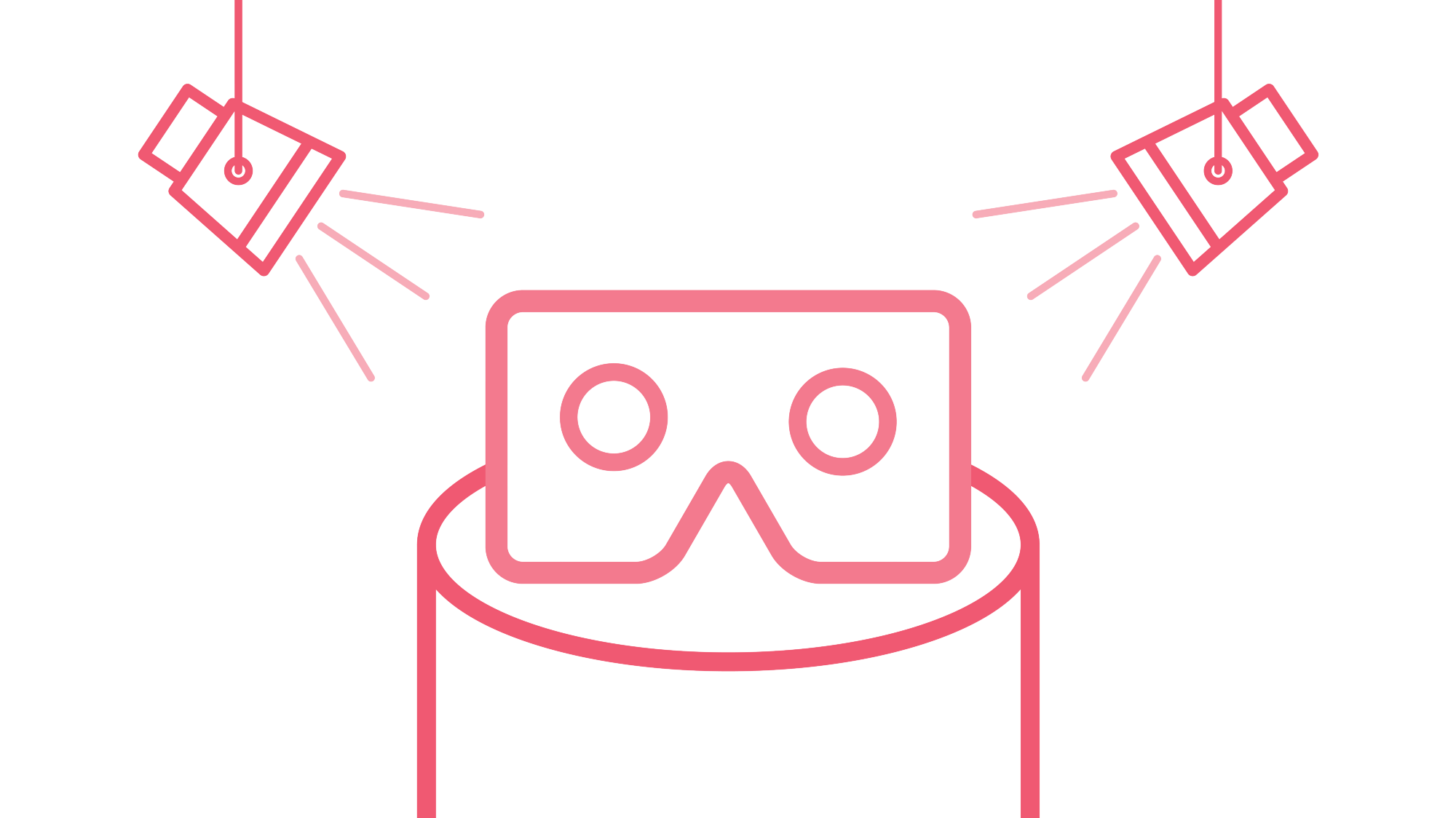Is virtual reality ready for primetime in 2016?

Short answer? Yes. The longer answer requires a little more digging into why it hasn’t been possible until now. In a 2014 article by Mashable, Chelsea Stark did a good job of pointing out the 5 major roadblocks VR faced in mainstream adoption. Let’s look into each of those 5 roadblocks and see if they’ve been solved in the past 15 months.

1. There’s no right way to move inside VR
Back in 2014, VR was almost exclusively a seated experience. Expensive add-ons like the the Virtuix Omni were announced, but they were too expensive, clunky, and impractical for a home VR experience. Since then, the HTC Vive has become available to developers with a consumer launch poised for April 2016. The Vive’s room tracking system solves the moving problem in VR. Oculus founder Palmer Luckey has also stated that their current IR camera solution also works as a feasible solution for room-scale tracking. From how crisp and polished their demos and camera tracking technology was at Oculus Connect 2, we see no reason to doubt that claim.
The VOID offered the most expansive and responsive tracking system that we’ve experienced thus far. Because hardware will be shared amongst a rolling crowd of people, The VOID can invest more into advanced tracking systems and have more control over the environments in their Virtual Entertainment Centers than the systems in the in-home VR space.
Note: Being able to move naturally in VR goes a long way in limiting nausea and keeping latency low. Virtually running around at 40mph with an Xbox controller isn’t natural. The brain reacts to the disparity between visual and physical inputs by inducing nausea. I’m very sensitive to latency; almost every DK1 experience made me nauseous. The Vive, The VOID, and Oculus’ CV1 were all comfortable experiences for me during extended periods of time.
Verdict: There’s a right way to move in VR
Spatially-restricted, tethered movement will be available with in-home VR systems in 2016. Truly untethered motion tracking will be available at The VOID’s Virtual Entertainment Center in Utah in mid 2016.

2. Look ma, no hands!
A big hangup with the VR systems of 2014 was that there weren’t any good hand tracking systems or controllers. Leap Motion and Sixense/Razer’s Hydra system were around, but the Hydra’s controllers were wired and the Leap Motion had issues with line of sight. The three major HMD makers (HTC, Oculus, and Sony) have attacked this problem head-on, with each offering their own touch controllers that will be available in 2016. In our opinion, the Vive’s motion controllers and tracking system are the most advanced of the three, but we’ll see how much progress Oculus has made since Oculus Connect 2 when it releases its touch controllers in mid-2016.
Verdict: We’re halfway there
The touch/motion controllers that will be available this year will be responsive and great for shooting games, but it still seems like there is progress to be made before picking up and manipulating objects seems natural and intuitive. These input systems may need to incorporate some type of tracking glove with more advanced sensors or an improved form factor.

3. There is no single experience yet that sells the hardware
This is one of the toughest roadblocks to look over because most of the big AAA Gaming Studios are being tight-lipped about what they have in the pipeline. After experiencing the demos at Oculus Connect 2, with Bullet Train in particular, I feel very optimistic about what’s in the pipeline at Epic Games and other big gaming studios. Oculus, Sony, and HTC have all stated that they expect to see dozens of AAA titles available in 2016. Many of the major media companies, ranging from Disney, to Comcast, to the NBA and HBO have invested tens of millions of dollars in VR content development. If a team of 12 at Epic made the Bullet Train demo in 10 weeks, I’m excited to see these AAA studios come out of the shadows in 2016/2017 and make Halo and Call of Duty on Xbox look like fragments of the past.
Verdict: It will start in Q2 2016 and accelerate through the Holiday Season.
I’m very confident that the few dozen launch titles on the major HMDs will feature amazing games with high replay value. This will start the snowball effect of bringing users into VR and encouraging Gaming Studios to invest $100m+ in the 2nd generation of VR games, removing the Chicken and Egg problem in VR. Within the next 2 or 3 years, we will see a marked shift from console/PC gaming to VR gaming. 2016 will be the year that shift begins.

4. It’s easy to make people sick
This has been the biggest problem since DK1. It has been getting exponentially better year over year. We are now to the point where seated experiences rarely make people nauseous on current consumer versions of the major HMDs. The lower-end platforms like Google Cardboard can still cause nausea if the experience features quick and jerky movements or are of low resolution. I’ve found that VR experiences that are non-seated and allow users to move in a natural way virtually eliminate nausea.
Verdict: No puking in 2016
Content developers that follow the best practices set out by the community for VR content should be able to easily create experiences that are comfortable for the end user. Through improved content curation, developers that don’t follow the best practices guidelines won’t see their content reach users. VR users can expect there to be a robust offering of VR apps that will be comfortable for them to use.

5. It’s still kind of silly looking
In an open/public setting like on a bus or plane when people are largely around strangers, I can see how people would feel weird and self-conscious with a big headset on. The good news is that the headsets are getting sleeker and industrial design is strarting to be taken seriously. Within the next decade, VR/AR capabilities could very well be built into something the size of traditional glasses.
Until then, we’ve found that people, even very image-conscious people feel like wearing a VR headset is cool and futuristic, and the experience takes precedent. People love to experience VR socially, as a group in a living room, office, or meetup where there are others also interested in experiencing VR with them.
Verdict: VR headsets aren’t the most glamorous objects, but it’s the experience that matters most.
Final Verdict:
VR is ready for primetime in 2016 and will hit its initial critical mass this year. One of the only barriers left is the initially high price point. Most first generation headsets are being manufactured with many custom components and systems. Once the manufacturing process becomes more mainstream, a price drop will soon follow. Until then, people in the industry will rely on word-of-mouth among friends and other influencers to convey the enjoyment that comes from a VR experience and exactly how it’s different than any other form of media they have experienced before. Virtual reality is going to have a great year in 2016 and we can’t wait to be a part of it.
Dan is a Co-Founder and leads Business Development at Holos, Inc.
Check out our website, holos.io, to learn more about out next-generation VR homespace, holos.

